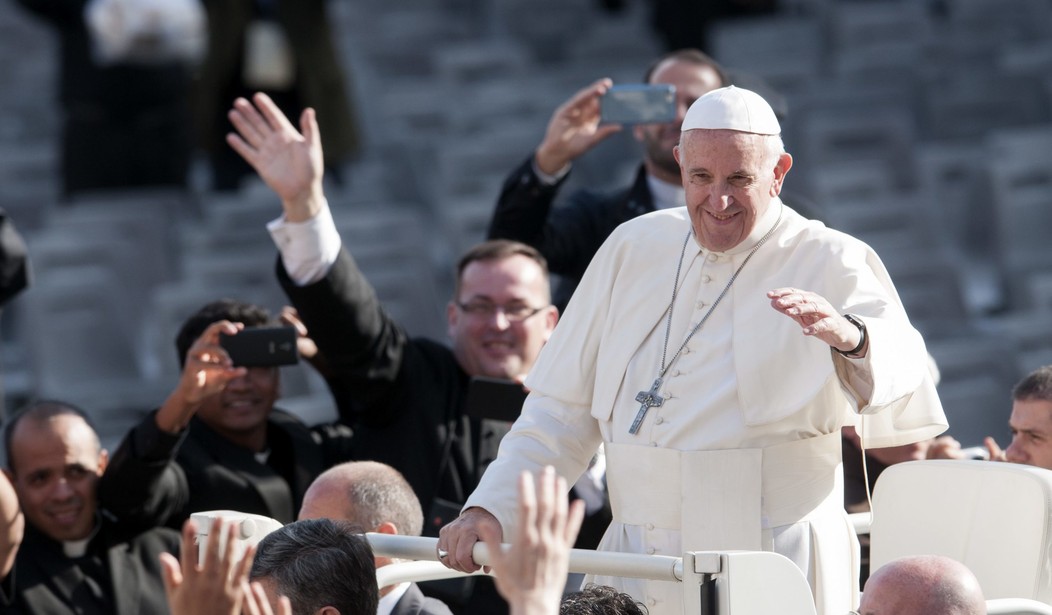WASHINGTON – Former Homeland Security Secretary Michael Chertoff said the U.S. government does not need to change the number of refugees it allows into the country after the Ohio State University attack because people who are not refugees have committed similar crimes.
Abdul Razak Ali Artan, 20, was a refugee from Somalia who drove into a crowd of pedestrians and stabbed people with a butcher knife at Ohio State on Monday. ISIS claimed Artan was one of their lone wolves.
Some lawmakers have previously suggested limiting the number of refugees the U.S. accepts from countries with a high level of terrorist activity. President-elect Donald Trump tweeted today, “ISIS is taking credit for the terrible stabbing attack at Ohio State University by a Somali refugee who should not have been in our country.”
Chertoff, who served in the George W. Bush administration, was asked if reducing the number of refugees coming into the U.S. from certain countries would be an appropriate response to the Ohio terrorist attack.
“No. I don’t think it’s — first of all, we don’t know about this person’s background. The fact that someone was a refugee doesn’t make them necessarily a problem or not a problem. It’s like we have people like Dylann Roof, who is not a refugee and he killed people in a church,” he said, referring to the white supremacist who killed nine at a Charleston church last year, following a Council on Foreign Relations discussion on “Domestic Security in the Age of ISIS.”
“So I think you’ve got to be a little bit more precise in knowing if there’s something about this person’s background, why did they do it? What’s it about? Otherwise, you are going to wind up excluding everybody, including people born in the country, because you are always going to find somebody who committed an act of violence that comes from a particular background,” he added.
During the event, Chertoff mentioned that Latin America is an area that “has not been discussed much” as it relates to national security.
“It tends to pop up when we see kind of an uptick in mass migration, and it’s really not Mexico. You get into parts of Central America, which are really almost ungoverned, and where we’ve actually been sending back. You talk about MS-13 — we send back, you know, gangsters, and they basically wind up not being properly controlled and you have people fleeing that,” he said, referring to the international gang Mara Salvatrucha.
“Plus you now have — I mean, there’s good news out of Colombia. There’s a peace agreement. Brazil, though, is now reeling with a number of corruption scandals. It’s not clear what Venezuela’s going to do. If people are in fear of their life, they’re going to run. And I don’t care how big the wall is; if someone’s got a gun at your back, you’re going over the wall,” he added.
Chertoff continued, “So we need to start to think about how do we not only deal with the issue of failed states or weak states in Africa and the Middle East, but also how do we deal with it in our own continent.”
Trump has pledged to build a wall along the U.S.-Mexico border to combat illegal immigration and drug trafficking. Chertoff recalled building “about 600 miles of fence” during his time in charge of the Homeland Security department.
“I welded some of it myself. It took a long time to do and we did it in areas where you should do it, not in areas like a mountain range where it doesn’t make any sense. So I look at some of these things and I think it’s very unlikely that it will be carried out as … has been portrayed,” he said. “However, I do agree that the message has to be counteracted and I think the only way to do it is to have people write and speak and act in a way that sends a contrary message because, in the end, it’s all done at a micro level, at a community level.”
PJM asked Chertoff why the double-layered fence was not completed across the full length of the U.S.-Mexico border during his term.
“We estimated that somewhere between 650 and 700 miles made sense to fence. It only makes sense when the distance between the border and a road or a city is sufficiently close that without delaying people you can’t intercept them. In a mountain range, a fence is a complete waste of money and time. It doesn’t add anything,” he said. “The slow-up was you have to do things like acquire the property. Sometimes you wind up litigating issues about whether you can build in a certain place. There might be environmental issues.”
Chertoff added, “There’s no magic to it. It’s a useful tool. It is not an artifact to be worshiped.”









Join the conversation as a VIP Member